Archive
Archive
On this page you can find the publication of the Simulation Science Center Clausthal / Göttingen as pdf files.
-

Download (pdf, 3 MB)
Content:
- Kognitiv und Empathisch Intelligente Kollaborierende Roboter (KEIKO)
- Nachhaltige Mensch-KI-Zusammenarbeit (NaMeKI)
- Sonderforschungsbereich 1368 wird weitere 4 Jahre gefördert
- Schwerpunktprogramm 2315: „Entstehung kritischer Verbindungen in Recycling-Schlacken“
- Einsatz von maschinellem Lernen in mehrskaligen Finite Elemente Simulationen
- Ausbau des SWZ-Rechenclusters
- SWZ Workshop 2024: Simulation meets AI
- Digitaler Zwilling der Qualitätssicherungslabore der BASF
- Digitaler Zwilling des Walzwerks der Dillinger Hüttenwerke
- SWZ-Webapp Bildungsmaterial des Monats auf twillo
- SimScience 2025
-
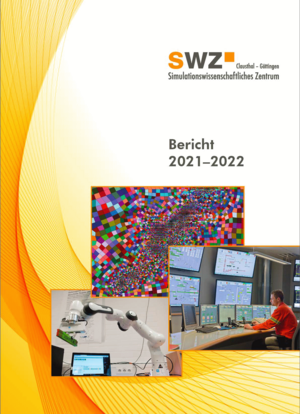
Download (pdf, 5.0 MB)
Content:
- International Teaching Staff Week
- Nationale Forschungsdateninfrastruktur für die Materialwissenschaften und Werkstofftechnik mit Beteiligung des SWZ gestartet
- DFG-Projekt „Plasmadesinfektion zur Inaktivierung von Viren in Aerosolpartikeln“
- SWZ am Schwerpunktprogramm 2315 „Engineered Artificial Minerals“ beteiligt
- Digitalisierung in der Lehre: Open Educational Resources
- DFG-Sonderforschungsbereich 1368 „Sauerstofffreie Produktion“
- Empathisch Intelligente, Kollaborierende Roboter
- Ausbau der IT-Infrastruktur für die Forschung am SWZ
- SWZ-Technologietransferprojekt „Digitaler Zwilling des Walzwerks der AG der Dillinger Hüttenwerte – Abbildung von Energie- und Rohstoffströmen“
- DFG-Projekt „Grenzflächenreaktion und Diffusionskinetik an der fest-flüssig Phasengrenze von Verbundgusspartnern im System Al-Cu-Zn“
- SWZ-Technologietransferprojekt „Digitaler Zwilling der Lebensmittelqualitätssicherungslabore der BASF“
-
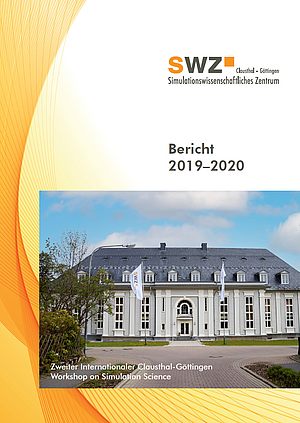
Download (pdf, 3.4 MB)
Content:
- Zweiter Internationaler Clausthal-Göttingen Workshop on Simulation Science
- International Teaching Staff Week
- SWZ-Juniorprofessor Dr.-Ing. Marcus Baum zum W3-Professor an der Universität Göttingen berufen
- DFG-Sonderforschungsbereich 1368 „Sauerstofffreie Produktion“
- DFG-Vorhaben „Einfluss von Oxidschichten auf die plastischen Eigenschaften von Metallen: Von der atomistischen zur mesoskopischen Skala“
- SWZ-Industrieprojekt „Digitaler Logistikzwilling“ für das Walzwerk der AG der Dillinger Hüttenwerke
- Rechenressourcen für die SWZ-Wissenschaftler
- Virtual-Reality-Labor am SWZ
- Clausthaler Graduiertenschule zur Mensch-Maschine-Interaktion (HerMes)
- Digitalisierung für nachhaltige Mobilität
-
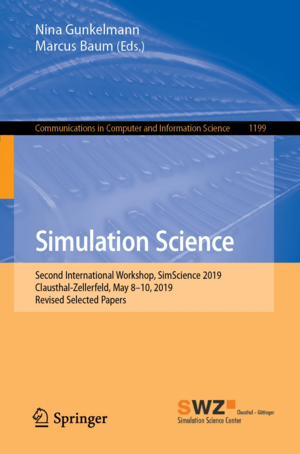
Postproceedings of the second Clausthal-Göttingen International Workshop Simulation Science (SimScience 2019), held from May 8th to 10th 2019 in Clausthal-Zellerfeld.
Content:
Optimization and Distributed Simulations
- Privacy-Preserving Human-Machine Co-existence on Smart Factory Shop Floors
Alexander Richter, Andreas Reinhardt, Delphine Reinhardt - Dynamic Management of Multi-level-simulation Workflows in the Cloud
Johannes Erbel, Stefan Wittek, Jens Grabowski, Andreas Rausch - On Approximate Bayesian Computation Methods for Multiple Object Tracking
Fabian Sigges, Marcus Baum - Investigating the Role of Pedestrian Groups in Shared Spaces through Simulation Modeling
Suhair Ahmed, Fatema T. Johora, Jörg P. Müller - ANNO: A Time Series Annotation Tool to Evaluate Event Detection Algorithms
Jana Huchtkoetter, Andreas Reinhardt, Sakif Hossain
Simulation of Materials: Self-Organized and Porous Structures
- Vibration Frequency Spectrum of Water-Filled Porous Silica Investigated by Molecular Dynamics Simulation
Yudi Rosandi, Gheo R. Fauzi - Numerical Study of Dispersive Mass Transport in Homogeneous and Heterogeneous Porous Media
Hector Rusinque, Eugenia Barthelmie, Gunther Brenner - Generative Design Solutions for Free-Form Structures Based on Biomimicry
Gaurab Sundar Dutta, Leif Steuernagel, Dieter Meiners - Accelerating the Visualization of Gaps and Overlaps for Large and Dynamic Sphere Packings with Bounding Volume Hierarchies
Feng Gu, Zhixing Yang, Michael Kolonko, Thorsten Grosch
Simulation of Materials: Finite Element and Multiscale Methods
- A Novel Approach to Multiscale MD/FE Simulations of Frictional Contacts
Henrik-Johannes Stromberg, Nina Gunkelmann, Armin Lohrengel - Numerical Investigation of Tri-Axial Braid Composite Structures as Crush Specimens Using the VPS-Solver
Sven Hennemann, Volker Hohm, Peter Horst, Lasse Twardy, Philip Zimmermann - Reinforcement the Seismic Interaction of Soil-Damaged Piles-Bridge by Using Micropiles
Mohanad Talal Alfach
- Privacy-Preserving Human-Machine Co-existence on Smart Factory Shop Floors
-
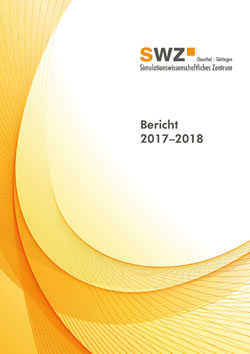
Download (pdf, 10 MB)
Content:
Simulation and Optimization of Networks
- Decomposition of multi-class queueing networks with batch processing
- Solving Robust Optimization Problems by Iterative Approaches
- ASimOV: Studying the impact of passenger behavior on train delays using agent-based simulation
- Demand robust arrangement of operating units and equipment by combining optimization and simulation
Simulation of Materials
- Coupling of multi-physical processes for the simulation of gas wells
- Distributed multiscale simulation to optimize the production of fiber composites for aircraft construction
- The Virtual Microscope: Interactive Visualization of Gaps and Overlaps for Large and Dynamic Sphere Packings
- Pressure-induced phase transformations in Fe-C alloys: Molecular dynamics simulations
Distributed Simulation
- Multi-Level-Simulation using Dynamic Cloud Environments
- Cloud-Efficient Modelling and Simulation of Magnetic Nano Materials
- Numerically Intensive Simulations on an Integrated Compute Infrastructure
- Monitoring Software Quality Using Agent-based Simulation Models
-
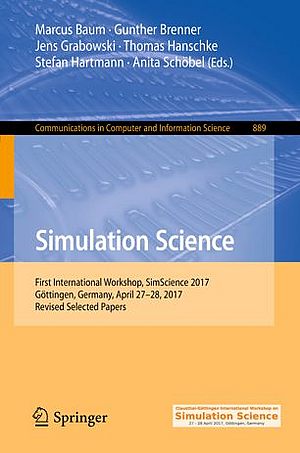
Postproceedings of the first Clausthal-Göttingen International Workshop Simulation Science (SimScience 2017), from April 27th to 28th 2017 in Göttingen.
Content:
Simulation and Optimization in Networks
- Passenger-Induced Delay Propagation: Agent-Based Simulation of Passengers in Rail Networks
Sebastian Albert, Philipp Kraus, Jörg P. Müller, Anita Schöbel - Impacts of Vehicle Sharing with Driverless Cars on Urban Transport
Markus Friedrich, Maximilian Hartl, Christoph Magg - Combining Simulation and Optimization for Extended Double Row Facility Layout Problems in Factory Planning
Uwe Bracht, Mirko Dahlbeck, Anja Fischer, Thomas Krüger - Interactive Multiobjective Robust Optimization with NIMBUS
Yue Zhou-Kangas, Kaisa Miettinen, Karthik Sindhya - Heuristics and Simulation for Water Tank Optimization
Corinna Hallmann, Sascha Burmeister, Michaela Wissing, Leena Suhl
Simulation of Materials
- Accelerated Simulation of Sphere Packings Using Parallel Hardware
Zhixing Yang, Feng Gu, Thorsten Grosch, Michael Kolonko - MC/MD Coupling for Scale Bridging Simulations of Solute Segregation in Solids: An Application Study
Hariprasath Ganesan, Christoph Begau, Godehard Sutmann - 3D Microstructure Modeling and Simulation of Materials in Lithium-ion Battery Cells
Julian Feinauer, Daniel Westhoff, Klaus Kuchler, Volker Schmidt - On Microstructure-Property Relationships Derived by Virtual Materials Testing with an Emphasis on Effective Conductivity
Matthias Neumann, Orkun Furat, Dzmitry Hlushkou, Ulrich Tallarek, Lorenz Holzer, Volker Schmidt
Distributed Simulations
- Simulating Software Refactorings Based on Graph Transformations
Daniel Honsel, Niklas Fiekas, Verena Herbold, Marlon Welter, Tobias Ahlbrecht, Stephan Waack et al. - Transparent Model-Driven Provisioning of Computing Resources for Numerically Intensive Simulations
Fabian Korte, Alexander Bufe, Christian Köhler, Gunther Brenner, Jens Grabowski, Philipp Wieder - Extending the CMMI Engineering Process Areas for Simulation Systems Engineering
Somaye Mahmoodi, Umut Durak, Torsten Gerlach, Sven Hartmann, Andrea D’Ambrogio - Learning State Mappings in Multi-Level-Simulation
Stefan Wittek, Andreas Rausch - Unifying Radio-in-the-Loop Channel Emulation and Network Protocol Simulation to Improve Wireless Sensor Network Evaluation
Sebastian Böhm, Michael Kirsche - Assessing Simulated Software Graphs Using Conditional Random Fields
Marlon Welter, Daniel Honsel, Verena Herbold, Andre Staedtler, Jens Grabowski, Stephan Waack - Elephant Against Goliath: Performance of Big Data Versus High-Performance Computing DBSCAN Clustering Implementations
Helmut Neukirchen
- Passenger-Induced Delay Propagation: Agent-Based Simulation of Passengers in Rail Networks
-
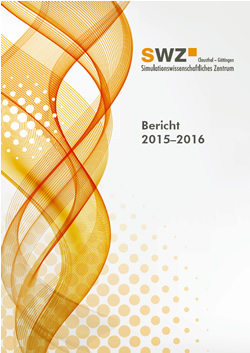
Download(pdf, 17 MB)
Contents:
Simulation and optimization of networks
- Structural studies on the emergence and propagation of delays in transport networks
- Secure communication in Internet of Things (IoT) environments
- Decomposition of open queueing networks with batch processing
- Simulation of uncertain optimization problems with application in timetable design and machine allocation
Simulation of materials
- Coupling multi-physical processes to simulate gas wells
Distributed Simulation
- A Cloud-based Software Infrastructure for Distributed Simulation" - Interface Development
- Simulation-based quality assurance of software systems
- DeSim: Distributed Architectures and Concepts for the Simulation of Systems of Systems
- Towards multi-level simulation using dynamic cloud environments
- Cloud-Efficient Modelling and Simulation of Magnetic Nano Materials
- Numerically intensive simulations on an integrated computing infrastructure"
Simulation-based Data Fusion & Object Tracking
-
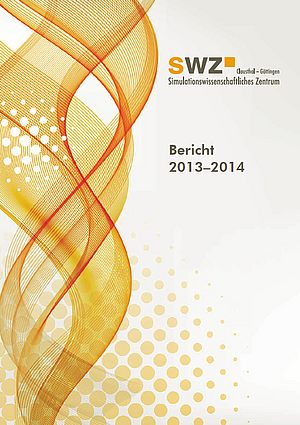
Download (pdf, 7.6 MB)
Content:
Simulation and Optimization of Networks
- Delays in public transport: formation and propagation of delays in networks
- Delay Propagation in Transport Networks – Modeling and Calculation using Closed Families of Probability Distributions
- Securing Communications in Internet of Things (IoT) Environments
- Diffusion approximation and decomposition of queueing networks with batch processing
Distributed Simulation
- A Cloud-Based Software Infrastructure for Distributed-Simulation Sub Project – Cloud Performance for Distributed-Simulation
- A Cloud-Based Software Infrastructure for Distributed-Simulation Sub Project – Interface Development and Reliability Engineering
- Simulation-Based Quality Assurance for Software Systems
- DeSim: Distributed Architectures and Concepts for the Simulation of Systems of Systems
-
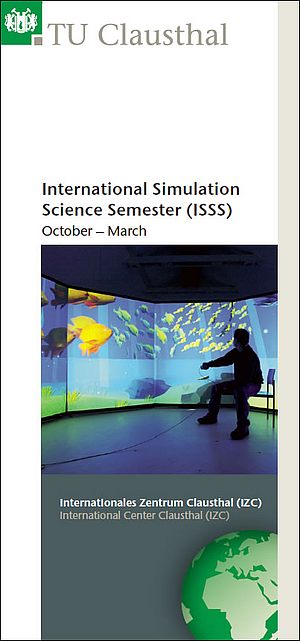
Download (pdf, 0.6 MB)
Every winter term TU Clausthal (TUC) offers an International Simulation Science Semester (IS3). It is organized jointly by the Simulation Science Center Clausthal / Göttingen (SWZ) and the International Center Clausthal (IZC). This course offer is a great opportunity for students to gain experience and orientation in international study programs required in a globalized world.
Content:
- Module 1: Introduction into Computational Modeling and Simulation
- Module 2: Introduction into Stochastic Systems and Simulation
- Module 3: Introduction into Computational Modeling and Simulation in Mechanical Engineering
- Module 4: Agent-based Modeling and Simulation
- Module 5: Transportation Analysis, Modeling and Simulation
- Module 6: Student Team Project in Computational Modeling and Simulation
- Module 7: Intercultural competence seminar
- Module 8: Language Training - German A 1.1 Beginners
- Module 9: Language Training - European and Non-European languages
-
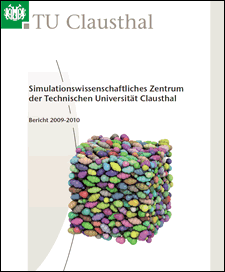
Download (pdf, 5,9 MB)
Content:
Materialien
- RaSim: Bestimmung der Raumausfüllung von Partikelmischungen unter Einbeziehung von Agglomeration (Michael Kolonko, Steffen Raschdorf, Stephan Mock)
- Magnetohydrodynamische Strömungen (Karl-Heinz Spitzer, Gunther Brenner, Yong Ma)
Produktion, Logistik und Verkehr
- Virtuelle Fabrikstruktur- und Layoutplanung mit erweiterten digitalen Modellen (Uwe Bracht, Christian Schlange)
Energie und Umwelt
- Long-term behaviour of sealed brine-fi lled cavities in rock salt mass – A new approach for physical modelling and numerical simulation (Karl-Heinz Lux)
- Ecological evaluation of the pulverized coal combustion in HTAC technology (Natalia Schaffel-Mancini)
- Optimierung von HT-PEM-Brennstoffzellen mittels numerischer Strömungssimulation (Volker Wesling, Peter Giese, Thorsten Kandelhardt)
Hochleistungsrechnen
- Analyse von dynamischen Lasten in hochbelasteten Strömungsmaschinen – Notwendigkeit der Modellvalidierung und des Hochleistungsrechnens (Gunther Brenner, Yang Yang, Andreas Lucius)
- Numerical simulation of liquid-liquid and liquidparticle flows by the Lattice Boltzmann Method (Ernesto Monaco, Gunther Brenner)
- Verfahren höherer Ordnung in Raum und Zeit mit Anwendung auf Gleitlagerberechnungen (Stefan Hartmann, Ahmad-Wahadj Hamkar, Torben Netz)
Visualisierung, Datenanalyse und Software Engineering
- MASSim (Multi-Agent Systems Simulation) Plattform (Tristan Behrens, Jürgen Dix, Michael Köster, Federico Schlesinger)
- Verification of Resource-Bounded Agents (Nils Bulling, Jürgen Dix)
- Environment Interface Standard (Jürgen Dix, Tristan Behrens)
- JREP: Extending Repast Simphony for JADE Agent Behavior Components (Jana Görmer, Gianina Homoceanu, Christopher Mumme, Jörg P. Müller, Michaela Huhn)
- Simulation und Realität bei der Chipsynthese mit VHDL am Beispiel von endlichen und unendlichen Zählern (Harald Richter)
-
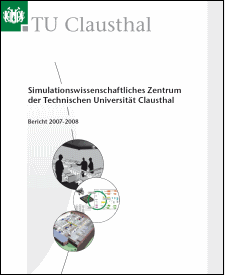
Download (pdf, 8.8 MB)
Content:
Materialien
- Elektronendynamik und quantenmechanische Effekte in der Streuung von Ionen an Atomen (Myroslav Zapukhlyak, Tom Kirchner)
- Monte Carlo-Simulation der radikalischen Ter- und Tetrapolymerisation (Marco Drache, Gudrun Schmidt)
- Modellierung und Simulation des Vacuum Assisted Resin Infusion (Gerhard Ziegmann, Florian Klunker, Santiago Aranda)
- Hierarchische Simulation von Partikelmischungen (Michael Kolonko, Steffen Raschdorf)
Produktion, Logistik und Verkehr
- Unterstützung der Planung und Steuerung großer Werkstattfertigungen durch Ablaufsimulation (Uwe Bracht, Johannes Reichert, Christian Kruse)
- Analyse und Optimierung komplexer Inbound-Callcenter-Systeme mittels ereignisorientierter stochastischer Simulation (Alexander Herzog, Thomas Hanschke)
- Pünktlichkeitsprognosen von Flugplänen mittels Simulation (Alexander Herzog, Thomas Hanschke)
- Das Projekt REMATE: Aufbau einer Revenue-Management-Simulationsumgebung bei der Deutschen Lufthansa (Tobias Schröder, Michael Frank, Thomas Hanschke)
Energie und Umwelt
- Simulation des Verbundbetriebs Virtueller Synchronmaschinen (VISMA) (Ralf Hesse, Dirk Turschner, Hans-Peter Beck)
- Dynamische Simulation elektrischer Energieverteilnetze – Energiepark Clausthal (Oleg Osika, Hans-Peter Beck)
- Dezentrales Energiemanagementsystem Prozessmodell des elektrischen Mittelspannungsnetzes Hans-Peter Beck, Ernst-August Wehrmann, Jens zum Hingst)
- Druckluftspeicherung in Salzkavernen (Compressed Air Energy Storage – CAES) (Karl-Heinz Lux, Uwe Düsterloh)
- Mathematical Modelling of Flameless Combustion (Marco Mancini, Patrick Schwöppe, Roman Weber, Stefano Orsino)
Hochleistungsrechnen
- Numerische Simulation instationärer Strömungsvorgänge in einem Radialverdichter) (Andreas Lucius, Gunther Brenner)
- Simulation of Multiphase Flows by using the Lattice Boltzmann Method (Ernesto Monaco, Gunther Brenner)
- Aerodynamische Analyse von Kleinwindanlagen mit vertikaler Achse (Merim Mukinovic, Ardavan Rahimi, Sayed Ahmadi, Gunther Brenner)
- Übertragung von Rosenbrock-Verfahren auf Finite-Elemente Berechnungen für elastomere Strukturen (Stefan Hartmann, Ahmad-Wahadj Hamkar)
- Zeitadaptive thermomechanisch gekoppelte Strukturberechnungen mit Hilfe der Methode der finiten Elemente (Stefan Hartmann, Karsten Jens Quint)
Visualisierung, Datenanalyse und Software Engineering
- MASSim (Multi-Agent Systems Simulation) Plattform (Tristan Behrens, Jürgen Dix, Michael Köster, Peter Novák)
- Visualisierung großer nichteuklidischer Datensätze (Barbara Hammer)
- Interaktive Visualisierung zeitabhängiger Oberflächen (Kai Hormann, Federico Ponchio, Tim Winkler)
- Combining Aspect-Oriented and Model-Driven Development for Supply Network Monitoring (Alexander Hornung, Jörg P. Müller)
- Inner Sphere Trees for Proximity and Penetration Queries (Gabriel Zachmann)
- A Benchmarking Suite for Static Collision Detection Algorithms (Gabriel Zachmann)
-
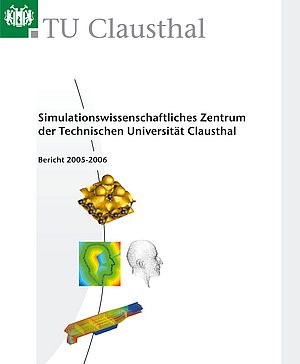
Download (pdf, 9.3 MB)
Content:
Materialien
- Ab-Initio Simulationen zur Stickstofffixierung des Enzyms Nitrogenase (Peter E. Blöchl)
- Molekulares Design von Oxid-Halbleiter Grenzflächen und deren Wachstumsprozesse auf der Basis von Ab-Initio Simulationen (Peter E. Blöchl)
- Das Programmpaket „CP-PAW“ für Ab-Initio Molekulardynamik (Peter E. Blöchl)
- Modellierung hochgradiger plastischer Umformung (Juri Estrin)
- Quantenmechanische Rechnungen zur Beschreibung von Streuexperimenten an Natriumatomen (Tom Kirchner)
- Finite-Elemente-Methoden als Hilfsmittel im Optimierungsprozess (Lena Marks, Gerhard Ziegmann)
- Rechnergestützte Bestimmung der Fehlimprägnierung im RTM-Verfahren (Gerhard Ziegmann, Florian Klunker, Santiago Aranda)
- Simulationsaktivitäten am IMET/ WUC (Heinz Palkowski)
- Modellierung des Plasma-Pulver-Auftragschweißens (Volker Wesling)
- Simulation der Raumausfüllung von Betonmischungen (Michael Kolonko, Steffen Raschdorf, Dominic Wäsch, Albrecht Wolter)
Prozesse, Anlagen und Logistik
- Neue Konzepte für Virtual Reality in der Fabrik- und Anlagenplanung (Clemens Eckert, Uwe Bracht)
- Stochastische Optimierungsverfahren zur Produktionssteuerung von Walzstraßen (Heike Busch, Thomas Hanschke, Alfred Neiss)Integrierte Kapazitäts- und Durchlaufzeitplanung mit Hilfe von Warteschlangennetzwerken (Thomas Hanschke, Horst Zisgen)
- Optimierung von Luftverkehrssystemen (Brigitte Fuhr, Thomas Hanschke, Michael Frank, Michael Mederer)
- Verspätungsoptimierung im Flugverkehr (Sylvia Arns, Thomas Hanschke)
- Optimierung und Simulation von Flughafenlandebahnen (Petra Huhn, Michael Kolonko)
Simulation im Revenue Management (Martin Friedemann, Thomas Hanschke, Anika Schröder, Michael Frank) - Beschreibung von Fußgängerflüssen basierend auf dem sozialen Kräftemodell bei Anwendung der molekulardynamischen Simulationsmethode (Karl Thomas Waldeer, Marko Apel)
Energie und Umwelt
- Vorausschauende Gasnetzsimulation (Hans-Peter Beck, Ernst-August Wehrmann, Cathrin Schröder)
- Dezentrales Energiemanagementsystem – Prozessmodell des elektrischen Mittelspannungsnetzes (Hans-Peter Beck, Ernst-August Wehrmann, Jens zum Hingst)
- Simulation von Bordnetzen (Hans-Peter Beck, Ralf Benger)
- Simulation einer virtuellen Synchronmaschine (Ralf Hesse, Hans-Peter Beck, Dirk Turschner)
- Studie über CO2-Speicherpotenzial und die Erhöhung des Ausbeutegrades in maturen Erdgaslagerstätten (CSEGR) (Günter Pusch)
- Modellierung und Simulation der Regenerativen Thermischen Oxidation (Torsten Reindorf, Otto Carlowitz)
Hochleistungsrechnen
- Numerische Simulation und Analyse von CVD Prozessen (Gunther Brenner, Merim Mukinovic)
- Numerische Simulation und Optimierung von Energiewandlungsmaschinen (Andreas Lucius, Gunther Brenner, Piller Industrieventilatoren GmbH)
- Bestimmung der Permeabilität von Fasermaterialien – Einsatz der Computersimulation (Florian Klunker, Santiago Aranda, Gerhard Ziegmann, Gunther Brenner)
- Lattice Boltzmann Methoden – Anwendung in der Tribologie (Gunther Brenner, Ahmed Al-Zoubi, Hubert Schwarze, Stefan Swoboda)
- Numerische Untersuchung von Mehrphasenströmungen in rotierenden Wälzlagern (Xiaojiang Si, Hubert Schwarze)
- Numerische Simulation in der Sonochemie (Sabine Langer, Thomas Huber, Gunther Brenner, Urs Peuker)
- Numerische Simulation der Schallausbreitung unter Berücksichtigung meteorologischer Einflüsse (Sabine Langer, Sebastian Hampel)
- Numerische Untersuchung von Fallfilmen mit Wärmeübergang (Walburga Kerschbaumer, Gunther Brenner)
Visualisierung, Datenanalyse und Software Engineering
- Rekonstruktion von Geländemodellen (Kai Hormann, Salvatore Spinello)
- Interpolation mit baryzentrischen Koordinaten (Kai Hormann, Michael S. Floater)
- Kamerabasiertes 3D-Handtracking in Echtzeit (Gabriel Zachmann, Daniel Mohr)
- Kinetische Datenstrukturen zur Kollisionserkennung bei deformierbaren Objekten (Gabriel Zachmann, René Weller)
- Natürliche Interaktion in virtuellen Umgebungen (Gabriel Zachmann, René Weller)
- Open-Source-Bibliothek zur Kollissionserkennung (Gabriel Zachmann, René Weller)
- Punkt-Wolken (Gabriel Zachmann, Friedhelm Meyer auf der Heide)
- Relevanzlernen für die klinische Proteomik (Barbara Hammer, Michael Biehl, Marc Strickert, Thomas Villmann)
- Simulation in Multiagentensystemen (MAS) (Jürgen Dix)